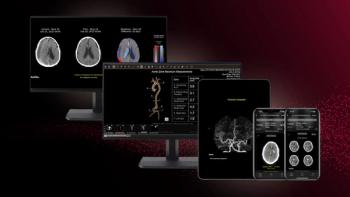
CT Use in Emergency Departments Tied to Lower Admissions
Increasing use of CT scanning in emergency departments has corresponded with fewer hospital admissions, according to a new study published online in the Annals of Emergency Medicine.
Increasing use of CT scanning in emergency departments has corresponded with fewer hospital admissions, according to a new study published online in the
A team of researchers led by Keith Kocher, MD, of the University of Michigan, assessed emergency department (ED) visits from 1996 to 2007, a period during which
But admission rates among those scanned fell. In 1996, the rate of hospitalization following CT scan was 26 percent; by 2007, it had fallen to 12.1 percent. The researchers found a similar pattern of declining risk of admission or transfer to intensive care units during the same period.
The team found ED rates of CT-scan growth to be highest for abdominal pain, flank pain, chest pain and shortness of breath, all of which can be symptoms of life-threatening emergencies.
Nearly a quarter of CT scans done in the United States happen in emergency departments, according to the study, both as a result of physician referrals and because EDs increasingly perform diverse testing prior to admission. In
The imaging manufacturer industry group, Medical Imaging & Technology Alliance (MITA), applauded the study. "Manufactures have transformed CT scanning since its inception with advances that have reduced medical radiation exposure and improved image quality,” David Fisher, MITA's executive director, said in a statement. “Continual innovations in CT technology have allowed doctors to detect, diagnose and treat patients earlier and more quickly than ever before. MITA applauds the work of Dr. Keith Kocher and his team whose findings underscore the importance of access to CT scans, which save lives and reduce healthcare costs.”
Newsletter
Stay at the forefront of radiology with the Diagnostic Imaging newsletter, delivering the latest news, clinical insights, and imaging advancements for today’s radiologists.



























